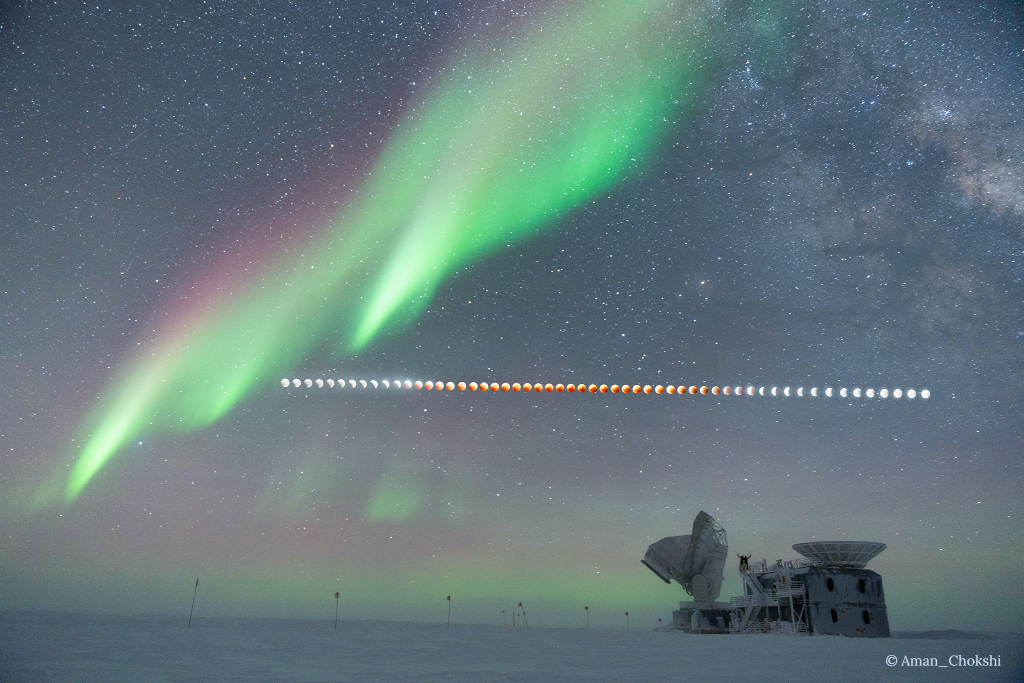2022年11月5日
Lunar Eclipse at the South Pole
Image Credit & Copyright: Aman Chokshi
Explanation: Last May 16 the Moon slid through Earth’s shadow, completely immersed in the planet’s dark umbra for about 1 hour and 25 minutes during a total lunar eclipse. In this composited timelapse view, the partial and total phases of the eclipse were captured as the Moon tracked above the horizon from Amundsen-Scott South Pole Station. There it shared a cold and starry south polar night with a surging display of the aurora australis and central Milky Way. In the foreground are the BICEP (right) and South Pole telescopes at the southernmost station’s Dark Sector Laboratory. But while polar skies can be spectacular, you won’t want to go to the South Pole to view the total lunar eclipse coming up on November 8. Instead, that eclipse can be seen from locations in Asia, Australia, the Pacific, the Americas and Northern Europe. It will be your last chance to watch a total lunar eclipse until 2025.
Tomorrow’s picture: inverted Sun day
南极的月食
图像提供与版权: Aman Chokshi
说明: 今年的5月16日,月球滑入了地球的影子之内,而在月全食阶段时,月亮完全沉浸在地球黝黑本影里长达1小时25分左右。这幅缩时组合图像,就记录了悬在阿蒙森-史考特南极站地平线上方的月亮,于偏食与全食期间的风貌。在那个冰寒而繁星点点的南极夜,与月亮分享这片星空的,还有涌动的南极光和银河系的中央盘面。图像前景则是位于地球最南端的暗区实验室之BICEP望远镜(右)和南极望远镜。不过,虽然极区的天空可能很壮丽,但你不会想去南极观赏11月8日即将到来的月全食。因为其他可见到这次月全食的地区,还有亚洲、澳大利亚、太平洋、美洲和北欧。而这将是你在2025年之前,能看到月全食的最后机会。
明日的图片: inverted Sun day



